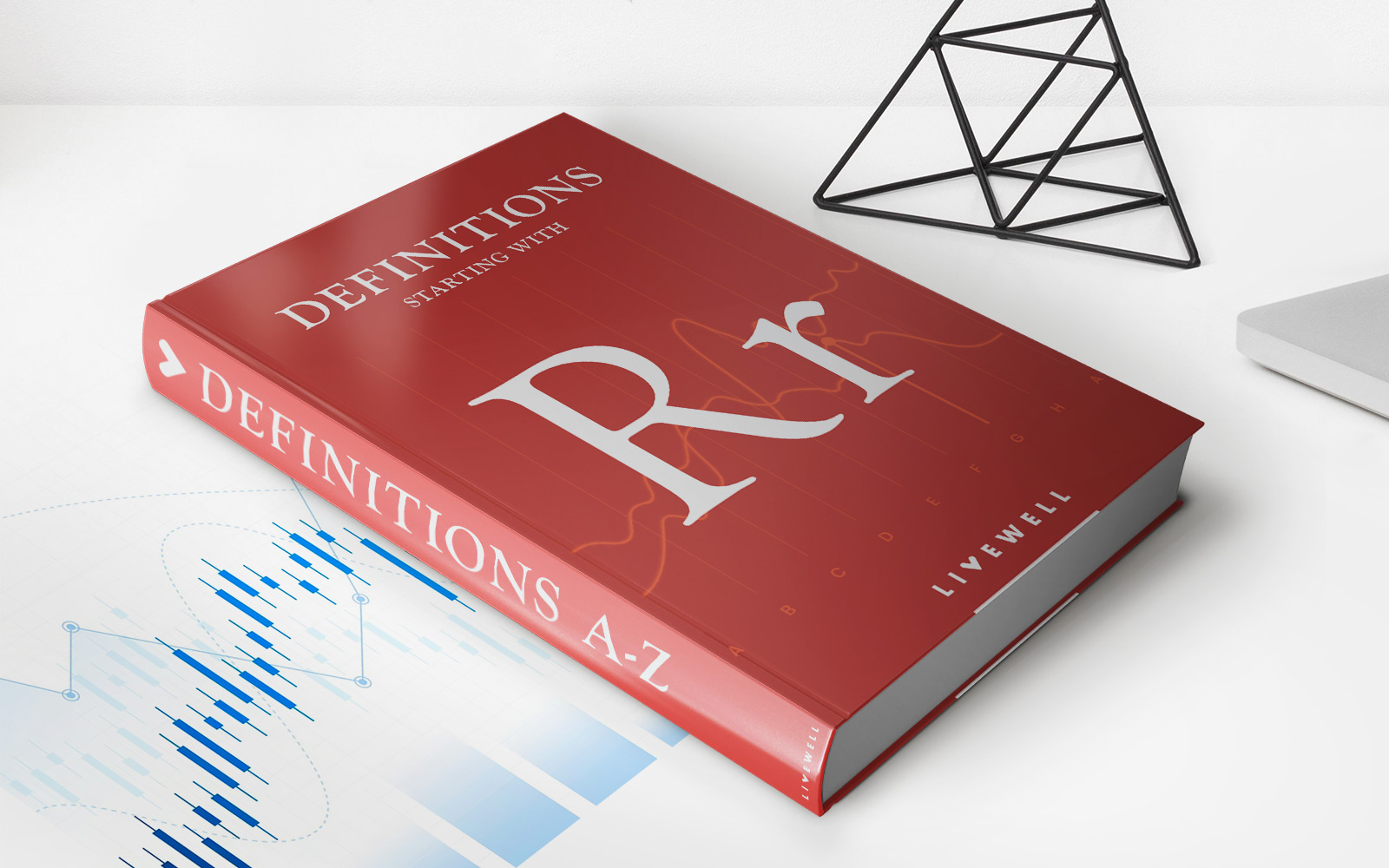Home>Finance>How Is A Collateral Assignment Used In A Life Insurance Contract?


Finance
How Is A Collateral Assignment Used In A Life Insurance Contract?
Published: October 14, 2023
Discover how collateral assignments are utilized in life insurance contracts, providing financial security and peace of mind. Learn about the benefits and considerations involved in this strategic financial tool.
(Many of the links in this article redirect to a specific reviewed product. Your purchase of these products through affiliate links helps to generate commission for LiveWell, at no extra cost. Learn more)
Table of Contents
Introduction
When it comes to financial matters, having a solid understanding of various concepts and strategies is crucial. One such concept is a collateral assignment, which plays a significant role in the world of life insurance contracts. Understanding how a collateral assignment works can provide you with valuable insights into how to manage and leverage your life insurance policy to meet your financial needs.
A collateral assignment involves using your life insurance policy as collateral for a loan or other financial transaction. It allows you to borrow against the cash value of your policy without surrendering the policy itself. This strategy can be particularly useful if you need access to funds for a specific purpose, such as starting a business, financing education expenses, or facing unexpected medical bills.
In order to grasp the significance of collateral assignments, it’s important to have a solid understanding of life insurance contracts. Life insurance is a contractual agreement between a policyholder and an insurance company. The policyholder pays regular premium payments, and in return, the insurance company provides a death benefit to the policy’s beneficiaries upon the policyholder’s death. Additionally, certain types of life insurance policies, such as whole life or universal life insurance, accumulate a cash value over time.
The cash value in a life insurance policy can be used in various ways. One option is to surrender the policy and receive the accumulated cash value. However, this may result in the termination of the policy and the loss of its associated benefits. Another option is to take a policy loan against the cash value. This allows the policyholder to access funds while keeping the policy intact.
This is where a collateral assignment becomes relevant. Instead of taking a policy loan, a policyholder can use a collateral assignment to borrow money from a lender by assigning a portion of the life insurance policy’s death benefit as collateral. In this arrangement, the lender becomes the assignee of the policy and is entitled to receive a portion of the death benefit if the policyholder passes away before the loan is repaid. This arrangement provides security to the lender and allows the policyholder to access funds without surrendering the policy.
In the following sections, we will delve deeper into how a collateral assignment works, its benefits and uses, as well as the considerations, limitations, and steps involved in setting it up.
What is a Collateral Assignment?
A collateral assignment is a legal agreement that allows a policyholder to assign a portion of the death benefit from a life insurance policy as collateral for a loan or other financial obligation. It serves as a way to secure the loan by providing the lender with a potential source of repayment in the event of the policyholder’s death. This arrangement allows the policyholder to access funds without surrendering the policy or disrupting its financial benefits.
With a collateral assignment, the policyholder remains the owner of the life insurance policy and retains control over other aspects of the policy, such as changing beneficiaries or making withdrawals from the cash value. The assigned portion of the death benefit serves as collateral for the loan or debt, and if the policyholder passes away before the loan is repaid, the lender has the right to receive the assigned portion of the death benefit to satisfy the outstanding debt.
It’s important to note that a collateral assignment does not transfer ownership of the policy to the lender. Instead, it grants the lender a limited interest in the policy specifically for the purpose of securing the loan. Once the loan is repaid, the collateral assignment is released, and the policy returns to the full control of the policyholder.
A collateral assignment can be used for various financial purposes, including personal loans, business financing, or even as a form of security for a surety bond. The flexibility of this arrangement allows policyholders to leverage the accumulated cash value and death benefit of their life insurance policy to meet their financial needs without sacrificing the long-term benefits of the policy.
It’s worth noting that the availability and terms of collateral assignment can vary depending on the insurance company and the specific policy. Some policies may have limitations on the amount that can be assigned or require approval from the insurance company before the assignment can be made. It’s important to review the policy terms and consult with the insurance provider or a financial advisor to understand the specific guidelines and implications of a collateral assignment.
In the next section, we will explore how a collateral assignment works within the context of a life insurance contract.
Understanding Life Insurance Contracts
Before delving deeper into how a collateral assignment works, it’s essential to have a solid understanding of life insurance contracts. A life insurance contract is a legal agreement between a policyholder and an insurance company, wherein the policyholder pays regular premium payments in exchange for financial protection for their loved ones in the event of their death.
Life insurance contracts come in various forms, but the two main types are term life insurance and permanent life insurance. Term life insurance provides coverage for a specific period, typically 10, 20, or 30 years. If the policyholder passes away during the term, the insurance company pays out a death benefit to the beneficiaries named in the policy. Permanent life insurance, on the other hand, provides lifelong coverage and includes a cash value component that accumulates over time.
The cash value in a permanent life insurance policy, such as whole life or universal life insurance, grows gradually over the years through premium payments and potential investment gains. This cash value can be accessed by the policyholder through withdrawals or policy loans, providing a source of liquidity that can be utilized for various financial needs.
One of the key advantages of permanent life insurance policies is their ability to accumulate cash value on a tax-deferred basis. This means that any growth in the cash value is not subject to immediate taxation, allowing the policyholder to potentially build a substantial cash reserve over time.
Furthermore, permanent life insurance policies often provide additional benefits such as the ability to participate in the insurance company’s profits through dividends, the option to increase or decrease the death benefit, and even the flexibility to adjust premium payments.
Given the unique features and advantages offered by permanent life insurance policies, they are often the type of policy chosen for a collateral assignment. The combination of death benefit protection and cash value growth make permanent life insurance policies an ideal asset to use as collateral for loans or other financial obligations.
Now that we have a basic understanding of life insurance contracts and their various components, let’s explore how a collateral assignment works in conjunction with a life insurance policy in the next section.
How a Collateral Assignment Works
Now that we understand the basics of life insurance contracts, let’s dive into how a collateral assignment works within the context of these policies. A collateral assignment involves assigning a portion of the death benefit from a life insurance policy as collateral for a loan or other financial obligation.
Here’s a step-by-step breakdown of how a collateral assignment typically works:
- The policyholder identifies a need for funds and seeks a loan or financing.
- The policyholder and the lender determine the amount of the loan and agree on the terms and conditions.
- A collateral assignment agreement is drafted, which outlines the terms of the assignment, including the assigned portion of the death benefit, the loan amount, and the repayment terms.
- The collateral assignment agreement is signed by the policyholder, the lender, and the insurance company, acknowledging the assignment and providing consent for the assignee to receive a portion of the death benefit in the event of the policyholder’s death.
- Upon the policyholder’s passing, the lender files a claim with the insurance company, providing necessary documentation to establish the validity of the claim.
- The insurance company verifies the claim and disburses the assigned portion of the death benefit to the lender to satisfy the outstanding debt.
- If there are remaining funds from the death benefit after repaying the loan, they are distributed to the designated beneficiaries of the policy.
It’s important to note that the policyholder remains the owner of the life insurance policy and retains control over other aspects of the policy, such as changing beneficiaries or making withdrawals from the cash value. The assigned portion of the death benefit is solely used as collateral for the loan, and the lender only has a claim to that specific portion.
It’s crucial for both the policyholder and the lender to understand the terms and conditions of the collateral assignment, including any limitations or restrictions set by the insurance company. Some common restrictions may include a maximum assignment amount, a requirement to maintain the policy in-force, or a provision for the policyholder to replace the collateral assignment with another form of security if requested by the insurance company.
By using a collateral assignment, the policyholder can access funds while keeping the life insurance policy intact. This can be particularly advantageous in situations where surrendering the policy would result in the loss of the accumulated cash value and other benefits.
In the next section, we will explore the various benefits and uses of collateral assignments within the realm of financial planning.
Benefits and Uses of Collateral Assignments
Collateral assignments offer several benefits and serve various uses within the realm of financial planning. Let’s explore some of the key advantages and common uses of collateral assignments:
1. Access to Funds
One of the primary benefits of a collateral assignment is the ability to access funds without surrendering the life insurance policy. By using the death benefit as collateral, the policyholder can secure a loan or obtain financing for personal or business purposes. This allows individuals to meet immediate financial needs without disrupting their long-term insurance coverage.
2. Retention of Policy Benefits
Unlike policy loans, which require repayment with interest, collateral assignments allow policyholders to retain the full benefits of their life insurance policies. These benefits can include the death benefit for beneficiaries, potential cash value growth, and the ability to participate in policy dividends. By using a collateral assignment, policyholders do not have to forfeit these valuable features.
3. Lower Interest Rates
When compared to other types of loans, collateral assignments often offer lower interest rates. This is because the loan is backed by the assigned portion of the life insurance policy’s death benefit, providing additional security for the lender. Lower interest rates can result in significant cost savings for the policyholder over the life of the loan.
4. Flexible Repayment Terms
Collateral assignments provide flexibility in terms of loan repayment. Policyholders and lenders can negotiate repayment terms that align with the borrower’s financial capacity, allowing for customized repayment schedules. This flexibility can help borrowers manage their cash flow effectively and repay the loan on terms that suit their specific needs.
5. Diverse Financial Uses
Collateral assignments can be used for a wide range of financial purposes. Common uses include funding education expenses, starting or expanding a business, purchasing or renovating a property, financing a major purchase, or covering unexpected medical expenses. The versatility of collateral assignments allows policyholders to leverage their life insurance policies to meet various financial goals.
6. Potential Tax Advantages
Collateral assignments may offer potential tax advantages depending on the specific circumstances. For example, if the loan proceeds are used for investment purposes or to generate income, the interest paid on the loan may be tax-deductible. It’s crucial to consult with a tax advisor or financial expert to understand the tax implications of a collateral assignment in your specific situation.
By leveraging the benefits and uses of collateral assignments, policyholders can maximize the value of their life insurance policies and utilize them as a valuable financial asset. However, it’s essential to consider the potential risks and limitations associated with collateral assignments, which we will explore in the next section.
Risks and Considerations
While collateral assignments offer several advantages, it’s important to fully understand the potential risks and considerations before entering into such an arrangement. Here are some key factors to keep in mind:
1. Impact on Death Benefit
Assigning a portion of the death benefit as collateral can reduce the overall amount payable to beneficiaries upon the policyholder’s death. It’s crucial to assess the impact of this reduction on the intended financial protection for loved ones and ensure that the remaining portion of the death benefit is still sufficient to address their needs.
2. Default Risk
If the policyholder fails to repay the loan, the lender may have the right to claim the assigned portion of the death benefit, potentially leaving beneficiaries with a reduced payout. It’s important to have a robust repayment plan in place and make timely payments to avoid default and the potential loss of policy benefits.
3. Policy Lapse
If the policy lapses due to missed premium payments or other reasons, the collateral assignment may become void, and the lender loses their security interest in the life insurance policy. Policyholders should ensure they have a sufficient plan in place to maintain premiums and keep the policy in force to protect the collateral assignment.
4. Limited Flexibility
Once a collateral assignment is in place, it restricts the policyholder’s ability to make changes to the policy, such as increasing or decreasing coverage, accessing the cash value, or changing beneficiaries. It’s important to evaluate whether the potential benefits of a collateral assignment outweigh the loss of flexibility in managing the life insurance policy.
5. Complex Documentation
Collateral assignments involve drafting and signing complex legal documents, including the collateral assignment agreement. It’s crucial to fully understand the terms and conditions of the agreement and consider seeking professional advice to ensure that all parties involved are clear on their rights and obligations.
6. Insurance Company Regulations
Each insurance company may have specific regulations and requirements regarding collateral assignments. It’s important to review the policy terms and consult with the insurance provider to understand any restrictions, limitations, or approval processes associated with collateral assignments.
Considering these risks and considerations is essential to make informed decisions when considering a collateral assignment. Seeking guidance from a financial advisor or insurance professional can help assess the suitability of a collateral assignment and its potential impact on your overall financial plan.
In the next section, we will explore any limitations and restrictions that may apply to collateral assignments.
Limitations and Restrictions
While collateral assignments can be valuable tools, there are certain limitations and restrictions that policyholders should be aware of. These limitations can vary depending on the insurance company and the specific policy. Here are some common limitations and restrictions to consider:
1. Assignment Limits
Insurance companies often impose limits on the amount that can be assigned from a life insurance policy. This limit is typically a percentage of the policy’s death benefit. It’s essential to review the policy terms to understand the maximum allowable assignment amount.
2. Policy Approval
In some cases, insurance companies require policyholder approval before a collateral assignment can be implemented. This approval process may involve submitting an application, providing financial information, or meeting certain criteria determined by the insurance company.
3. Maintaining Policy In-Force
To retain the collateral assignment, policyholders must keep the life insurance policy in force, which includes paying premiums on time. If the policy lapses or is terminated, the collateral assignment may become void, and the policyholder may lose the associated benefits.
4. Replacement of Collateral
In certain situations, insurance companies may require the policyholder to replace the collateral assignment with another form of security if requested. This requirement ensures that the insurance company is adequately protected against potential losses.
5. Removing the Collateral Assignment
If the policyholder wishes to remove the collateral assignment, they will need to follow the specified procedure outlined by the insurance company. This often involves submitting a formal request, providing necessary documentation, and obtaining the insurance company’s approval.
6. Financial Institution Requirements
Financial institutions, such as banks or lenders, may have their own specific requirements for collateral assignments. These requirements may include minimum loan amounts, credit checks, or additional documentation. It’s important to familiarize yourself with the lender’s guidelines to ensure a smooth collateral assignment process.
7. Legal and Financial Advice
Due to the complex nature of collateral assignments, it’s wise to seek advice from legal and financial professionals. They can provide guidance on the legal implications, tax considerations, and overall suitability of a collateral assignment based on your specific circumstances.
Understanding these limitations and restrictions is crucial when considering a collateral assignment. It’s important to review the policy documents, consult with the insurance company and relevant professionals, and ensure compliance with all applicable regulations to navigate the process successfully.
In the next section, we will outline the general steps involved in setting up a collateral assignment.
How to Set Up a Collateral Assignment
Setting up a collateral assignment requires careful consideration and following specific steps. While the exact process may vary depending on the insurance company and the lender, here are some general guidelines to help you navigate the setup process:
1. Assess Your Financial Needs
Determine the amount of funds you need and the purpose for which you require the loan or financing. Assess your financial situation and ensure that a collateral assignment aligns with your overall financial goals and needs.
2. Identify the Lender
Research potential lenders that offer collateral assignments and select one that best meets your requirements. Consider factors such as interest rates, loan terms, and reputation when making your decision.
3. Consult with professionals
Seek the advice of financial and legal professionals who specialize in life insurance policies and collateral assignments. They can guide you through the process, provide expert recommendations, and ensure that you fully understand the implications and obligations associated with a collateral assignment.
4. Review Policy Terms
Review the terms of your life insurance policy, paying particular attention to any provisions related to collateral assignments. Understand the limitations, restrictions, and requirements set by your insurance company.
5. Draft the Collateral Assignment Agreement
Work with legal professionals to draft a collateral assignment agreement that outlines the terms and conditions of the assignment. This agreement should clearly specify the assigned portion of the death benefit, the loan amount, the repayment terms, and any other relevant provisions.
6. Obtain Signatures and Consent
Ensure that all parties involved, including yourself, the lender, and the insurance company, sign the collateral assignment agreement. The insurance company’s consent is crucial to acknowledge and approve the assignment.
7. Submit Documentation
Provide the necessary documentation to the insurance company and the lender to establish the collateral assignment. This may include copies of the collateral assignment agreement, policy documents, and any other requested information.
8. Stay Informed and Compliant
Keep track of your loan repayments and stay informed about any updates or changes related to the collateral assignment. Comply with the terms and conditions stated in the collateral assignment agreement, including making timely payments to the lender and maintaining the life insurance policy in force.
Remember that these steps are general guidelines, and the specific process may vary based on your unique situation and the requirements set by the insurance company and the lender. Consulting with professionals experienced in collateral assignments will ensure a smooth and successful setup process.
In the final section, we will conclude our discussion on collateral assignments and summarize the key points to remember.
Conclusion
Collateral assignments serve as a valuable tool in leveraging the benefits of a life insurance policy while accessing funds for various financial needs. By assigning a portion of the death benefit as collateral, policyholders can secure loans or financing without surrendering their policies or disrupting the benefits associated with them.
We began by understanding the basics of collateral assignments and the concept of life insurance contracts. We then explored how a collateral assignment works within the context of a life insurance policy, outlining the steps involved in setting one up.
Collateral assignments offer several benefits, including access to funds, retention of policy benefits, lower interest rates, flexible repayment terms, and diverse financial uses. However, it’s important to consider the potential risks and limitations associated with collateral assignments, such as the impact on the death benefit, default risk, limited flexibility, and complex documentation.
It’s essential to carefully evaluate your financial needs, consult with professionals, review policy terms, and draft a well-structured collateral assignment agreement. By following these steps and staying compliant with the agreement, you can navigate the collateral assignment process successfully.
To ensure a smooth and efficient setup process, it’s advisable to seek guidance from financial advisors, insurance professionals, and legal experts who can provide personalized advice based on your specific circumstances.
In summary, a collateral assignment can be a powerful strategy to utilize the accumulated cash value and death benefit of a life insurance policy while addressing immediate financial needs. However, it’s crucial to conduct thorough research, seek professional advice, and fully understand the implications and obligations associated with collateral assignments.
By carefully weighing the benefits, risks, and considerations, you can make informed decisions and effectively use collateral assignments to enhance your financial plan and achieve your goals.














